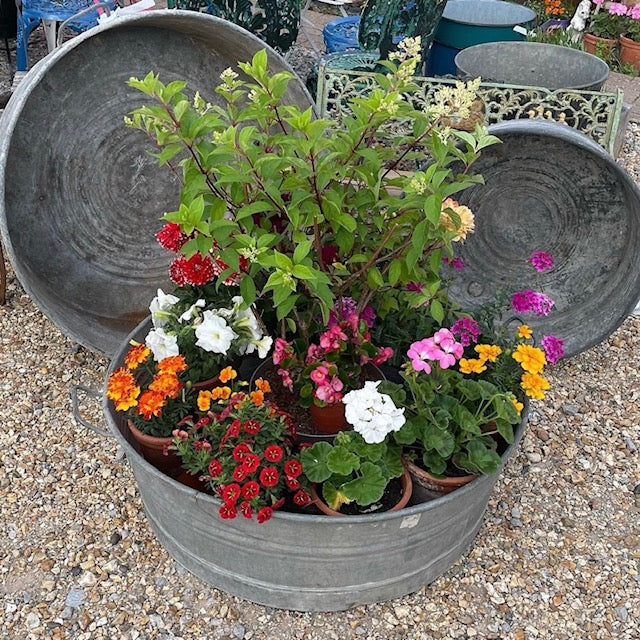Spring Garden Preparation and Planting in Containers.

Spring is the perfect time to start planning your garden and bringing vibrant colours back into your outdoor space. Whether you have a small urban garden or a sprawling country garden, planting in containers can be a terrific way to add variety and flexibility to your spring planting. In this blog post, we will explore the benefits of planting in containers and provide you with tips to create a stunning spring garden.
Why should you consider planting in containers?
Planting in containers offers great advantages for both experienced gardeners and beginners. One of the main benefits is the ability to control the soil quality and drainage. By using reclaimed containers, terracotta pots, or galvanised planters, you can ensure that your plants receive the right amount of water and nutrients.
Containers also provide the flexibility to move your plants around, allowing you to experiment with different arrangements and create focal points in your garden. This is especially useful for gardeners working with urban gardens, particularly in compact areas. You can easily rearrange your containers to maximise sunlight exposure or create a visually appealing display.
Choosing the right containers
When selecting containers for your spring garden, consider the material, size, and style. Galvanised containers are not only durable but also add a touch of rustic charm to your garden. Terracotta pots, on the other hand, provide excellent insulation and moisture retention for your plants.
Make sure to choose containers that are large enough to accommodate the root system of your plants. This will ensure healthy growth and prevent overcrowding. Additionally, consider the style and colour of the containers to complement the overall aesthetic of your garden.
Preparing the containers
Before planting, it is important to prepare your containers to create an optimal growing environment for your plants. Start by cleaning the containers with mild soap and water to remove any dirt or debris. This will help prevent the spread of diseases and pests.
Next, fill the containers with a well-draining potting mix. Avoid using garden soil, as it can become compacted and hinder root growth. A good potting mix should be lightweight, fertile, and retain moisture without becoming waterlogged.
Choosing the right plants
When it comes to choosing plants for your spring garden, consider the specific requirements of each plant, such as sunlight, water, and temperature. Select a variety of spring flowers that bloom at various times to ensure a continuous display of colour throughout the season.
Popular choices for spring planting include tulips, daffodils, hyacinths, and pansies. These flowers are not only beautiful but also relatively easy to grow in containers. Remember to group plants with similar water and sunlight needs together to ensure optimal growth.
Caring for your container garden
Proper care is essential to maintain the health and beauty of your container garden. Regular watering is crucial, especially during dry spells. Check the moisture level of the soil by inserting your finger about an inch deep. If it feels dry, it is time to water.
Fertilise your plants regularly with a balanced, water-soluble fertiliser to provide them with the necessary nutrients. Prune any dead or damaged leaves to promote new growth and remove spent flowers to encourage continuous blooming.
Lastly, monitor your plants for signs of pests or diseases. Early detection and intervention can prevent the spread and minimise damage to your plants.
With these tips in mind, you are ready to embark on your spring garden preparation journey. Whether you have a small balcony or a vast country garden, planting in containers can transform your outdoor space into a vibrant oasis. Get creative, experiment with different plant combinations, and enjoy the beauty of nature right at your doorstep.
